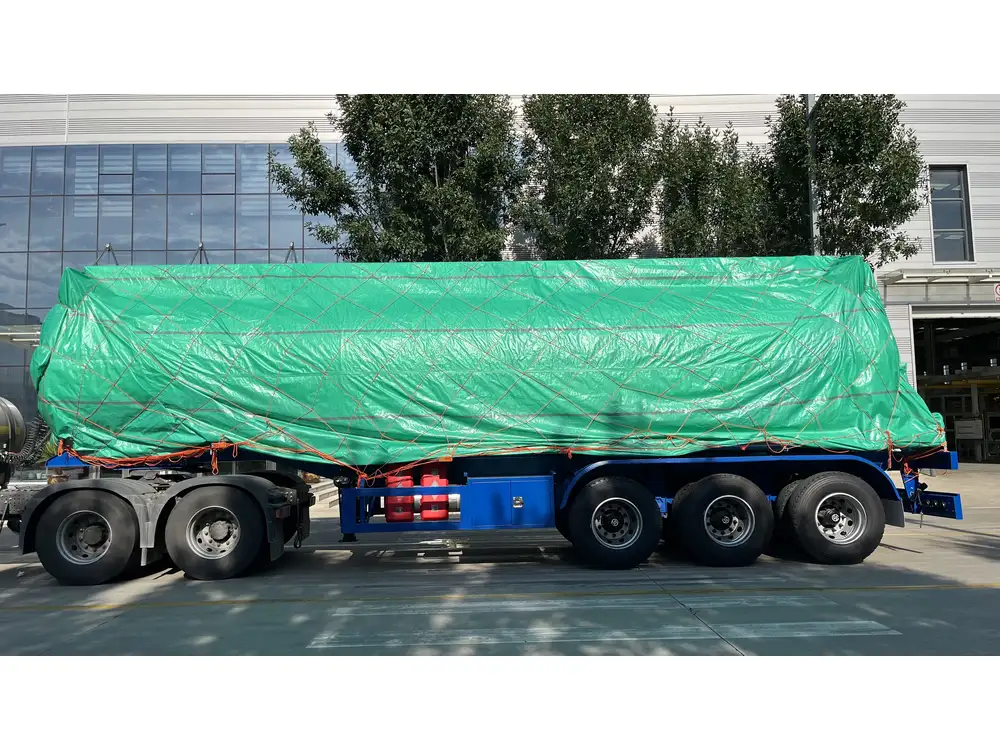When it comes to transporting agricultural products, understanding the capacities of semi-trailers is paramount, especially for commodities like corn. This grain, a staple in the agricultural sector, has specific requirements for transportation. Farmers, distributors, and transport companies often need precise answers regarding loading capacities to maximize efficiency and profitability.
Understanding Semi-Trailer Capacities
What is a Semi-Trailer?
A semi-trailer is a type of trailer that is commonly used for hauling goods; it is distinguished by the fact that it does not have a front axle. Instead, it is supported by the rear wheels of a truck tractor and is designed to be towed by a powered vehicle. The design allows for significant weight capacities and is particularly suited for long-haul transport.

Types of Semi-Trailers
There are various types of semi-trailers suitable for transporting different commodities, including:
| Trailer Type | Description | Common Use |
|---|---|---|
| Flatbed Trailer | No sides or roof, versatile for various goods. | Construction materials, machinery |
| Dry Van Trailer | Fully enclosed with walls, roof, and a rear door. | Consumer goods, electronics |
| Tanker Trailer | Designed for liquid transportation. | Fuels, chemicals |
| Bulk Cargo Trailer | Typically equipped with a bulkhead and designed for loose materials. | Grain, sand, aggregate |
| Reefer Trailer | Equipped with a refrigeration unit for temperature-sensitive goods. | Perishable goods, food items |
Among these, the bulk cargo trailer is the most relevant for transporting corn.
How Many Bushels of Corn Can Fit in a Semi-Trailer?
Determining Volume Capacities
The key to answering the question, “how many bushels of corn in a semi-trailer,” hinges on several factors:
- Trailer Size: Most bulk semi-trailers have sizes varying between 28 to 53 feet in length.
- Width and Height: Common trailer widths are typically 8.5 feet, and heights can vary, affecting the total volume.
- Load Weight: Corn is typically loaded to a density of about 56 pounds per bushel.
To facilitate our calculations, let’s consider a standard 53-foot bulk semi-trailer.

Volume and Weight Calculations
A typical 53-foot bulk semi-trailer can hold approximately 1,100 to 1,200 cubic feet. To convert this volume into bushels:
- Convert Cubic Feet to Bushels:
- 1 Bushel of corn = approximately 1.244 cubic feet.
Therefore, to find out how many bushels one can fit in a 53-foot semi-trailer:
[ \text{Total Bushels} = \frac{\text{Total Cubic Feet}}{\text{Cubic Feet per Bushel}} = \frac{1,100}{1.244} \approx 884 \text{ bushels} ] (this number may vary slightly based on precise measurements and loading techniques).Average Bushel Capacity of Common Trailer Types
| Trailer Type | Volume (Cubic Feet) | Approx. Bushel Capacity |
|---|---|---|
| 28-ft Bulk Trailer | 1,660 | ~1,333 bushels |
| 40-ft Bulk Trailer | 2,800 | ~2,252 bushels |
| 53-ft Bulk Trailer | 3,500 | ~2,811 bushels |
Loading Practices
To maximize efficiency and maintain safety standards, operators should adhere to specific loading practices:
- Weight Distribution: Ensure the weight is evenly distributed across the trailer to avoid swaying and ensure tire longevity.
- Moisture Control: Higher moisture content in corn can lead to spoilage. It is critical to monitor this during loading to maintain the quality of the commodity.
- Securing Loads: Even though corn is generally bulk-loaded, taking additional care to secure it can help prevent shifting during transportation.

The Importance of Accurate Measurements
Precision in measurements is crucial for several reasons:
Preventing Overloading: Semi-trailers come with specific gross weight limits, usually around 80,000 pounds in total, including both the trailer and the truck. Overloading can lead to fines and mechanical failures.
Transport Efficiency: By calculating the optimal loading amount, companies can minimize transportation costs while maximizing profit.
Enhancing Logistics Planning: Understanding how many bushels can fit into a semi-trailer helps in planning loading and delivery routes more effectively.
Additional Factors to Consider in Transportation
While calculating how many bushels of corn can be transported is crucial, there are other important factors as well:
Weather Conditions
Inclement weather can significantly impact transport routes. Ensuring that trailers have the proper coverage and protecting the load against precipitation is essential—moisture can degrade corn quality detrimental to transport efficiency.

Local Regulations
Every jurisdiction may harbor different regulations regarding weight limits, vehicle dimensions, and transport routes. Being well-versed in these regulations can prevent costly delays or penalties.
Future Projections for Corn Demand
Understanding the market demand for corn is vital for transport manufacturers and distributors. With predictive analytics, logistical planning can be adjusted to meet the forecasted needs, optimizing transport capabilities.
Sustainability Practices
Modern trucking companies are under increasing pressure to adopt sustainable practices. Utilizing efficient routes, reducing unnecessary idling, and even considering alternative fuels can not only optimize transport costs but also contribute to environmental stewardship.

Technology and Tracking
Employing transport management systems (TMS) can revolutionize how semi-trailers are managed. These systems can provide real-time tracking of loads, optimize routes, assess loads for weight distribution, and enhance communication with dispatchers, gaining a competitive edge in logistics.
| Technology Aspect | Benefits |
|---|---|
| Real-Time Tracking | Monitor loads and drive efficiency. |
| Route Optimization | Reduce fuel costs and travel time. |
| Load Planning Tools | Maximize bushel capacities within weight limits. |
| Analytics | Future-proof operations with data-informed decisions. |
Conclusion
Transporting corn using semi-trailers involves a detailed understanding of capacity, precise loading practices, and ongoing considerations regarding regulations, weather, and technology. With the insights provided, stakeholders can optimize their transportation processes, ensuring greater efficiency and profitability. Whether it’s a small local operation or a large-scale distribution network, knowing how many bushels of corn can fit into a semi-trailer is just the beginning of more profound logistical considerations.
By leveraging this information, professionals in the agricultural and transportation sectors can ensure they are equipped to make sound judgments, contribute positively to the supply chain, and meet the evolving demands of the marketplace efficiently.



